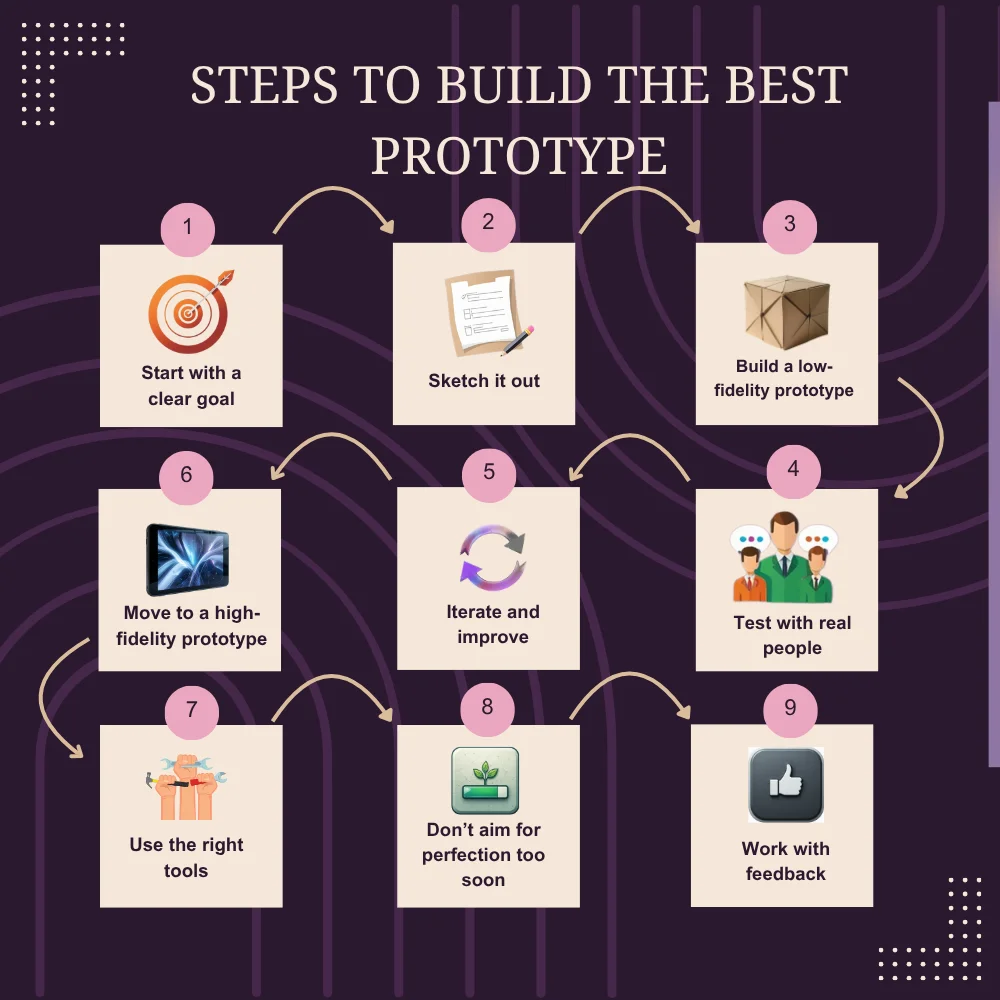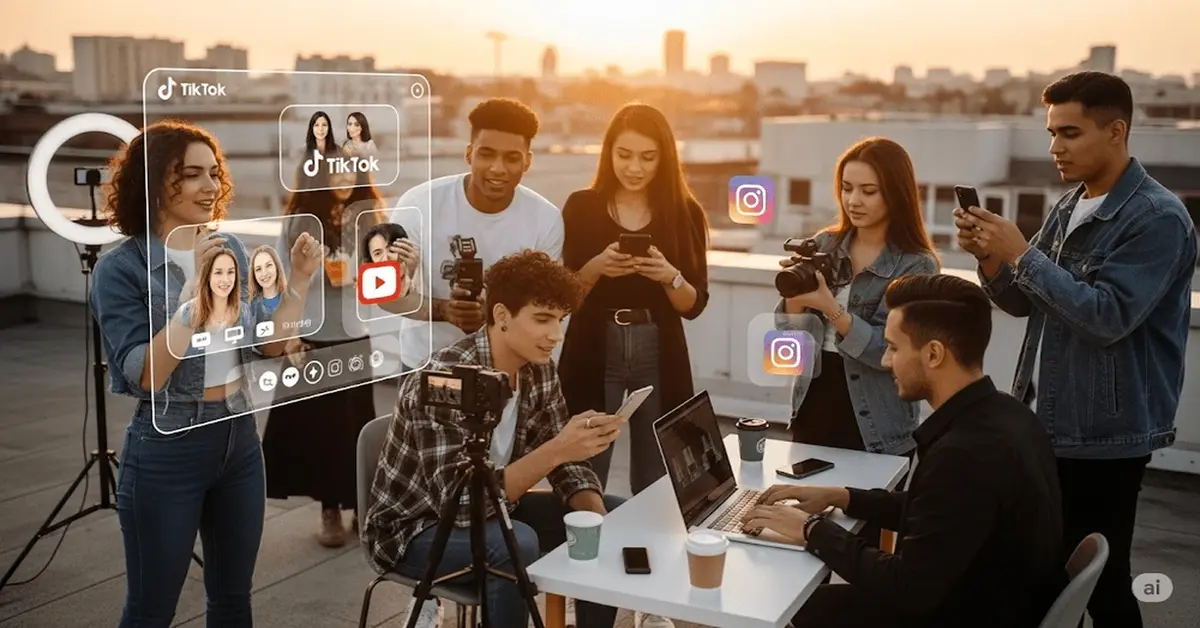Coming up with a new idea is exciting but turning that idea into something real can feel overwhelming. A prototype helps you see how your idea would work in real life without spending too much time or money at the start. Let’s break down how you can build a strong, simple prototype and why it’s so important.
Why prototyping is important?
Prototyping lets you test your idea early. Instead of guessing if something will work, you make a basic version and try it out. This way, you find mistakes or improvements sooner. It also helps you show your idea to other people, like team members, investors, or customers, and get feedback. A good prototype saves you from wasting resources on something that might not work as planned.
Steps to Build the Best Prototype

Start with a clear goal
Before you even think about building, write down what problem your idea is solving and who will use it. A clear goal keeps you focused and makes it easier to decide what features to include in the first version. Think about what success looks like for your prototype. Do you want to test if people understand how it works? Or do you want to check if the main function performs well? Your goal will guide you through the whole process.
Sketch it out
The first step is to put your idea on paper. Drawing your concept doesn’t need to be fancy; simple sketches work fine. This helps you see your idea from different angles and spot issues early. You can create multiple sketches to explore different options. Once you see it on paper, you can quickly change parts without spending much effort.
Build a low-fidelity prototype
A low-fidelity prototype is a simple, rough model. It can be made from paper, cardboard, or even simple materials like foam or clay. For digital products, it can be a clickable wireframe with basic functions. The goal is not to make it perfect but to show the basic structure and flow.
Some benefits of low-fidelity prototypes include:
- Quick to make
- Cheap materials
- Easy to change
Once you have this rough version, you can share it with others to collect early feedback.
Test with real people
The best way to improve your idea is to see how real users interact with it. Ask people to try your prototype and observe how they use it. Encourage them to speak their thoughts aloud. Take notes on what confuses them or where they get stuck. These observations are more valuable than any guess you could make on your own.
When testing, focus on:
- Ease of use
- Clarity of design
- Whether the main function works as planned
Iterate and improve
After testing, review all the feedback. Look at what worked and what didn’t. Then, make changes to your prototype and test again. This cycle of building, testing, and improving is called iteration. The more you repeat this, the better your idea becomes. Each version brings you closer to a final product that people will actually want to use.
Move to a high-fidelity prototype
When you feel confident with your low-fidelity version, you can move to a high-fidelity prototype. This version looks more like the final product and includes more details. It might include better visuals, working buttons, or real data. While it takes more time and effort, it helps you see how your idea would work in a real-world setting.
High-fidelity prototypes are useful for:
- Showing to investors
- Testing technical functions
- Getting detailed user feedback
Use the right tools
Today, there are many tools to help you build a prototype. For physical products, you might use 3D printing or basic crafting materials. For digital products, tools like Figma, Sketch, or Adobe XD allow you to make interactive designs quickly. Choose the tool that matches your skills and resources. You don’t need to master every tool; focus on what helps you express your idea clearly.
Don’t aim for perfection too soon
Many people get stuck trying to make the perfect first prototype. Remember, the point of prototyping is to learn, not to build a flawless product right away. Start small and improve step by step. Each mistake is a chance to learn and make your idea stronger. The faster you start testing, the sooner you understand what really works.
Work with feedback
Ask for feedback often, and from different types of people. Friends, colleagues, and even strangers can give you new insights. Try not to take criticism personally. Instead, see it as a tool to make your idea better. Sometimes, people will point out things you never noticed, and these small changes can make a big difference.
When to move beyond the prototype?
Once your prototype has gone through several rounds of testing and you feel confident in its design and function, you can start turning it into a real product. By then, you’ll know what features to keep, what to remove, and how to make it attractive to your target users. A well-tested prototype reduces the risk of failure when launching your final product.
Final thoughts
Prototyping is one of the most effective ways to turn an idea into something real. It helps you learn quickly, save money, and build something people actually want. Don’t wait for a perfect idea to start; just begin with small steps and keep improving. Remember, every big product once started as a simple sketch or model. Start today and bring your idea to life!



